616 St Peter, New Orleans, Louisiana 70116
Very often, people who are coming to New Orleans to join us for a Ghost Tour are interested in other activities or attractions which are haunted. We can highly recommend this haunted, and historic theatre in the French Quarter.
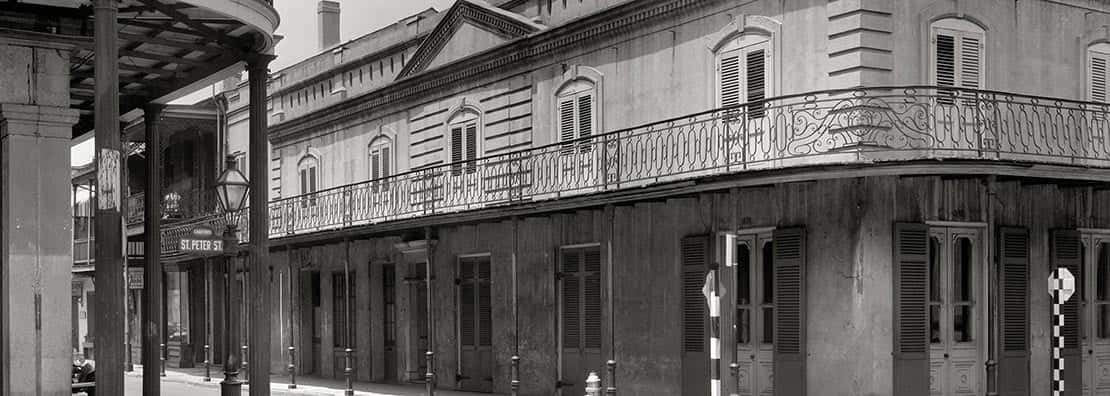
If you're visiting from out of town, and wish to catch a show, you can't beat The French Quarters' own Le Petit Theatre du Vieux Carre. Le Petit is New Orleans' most historic playhouse. The theatre was established in 1916, and has operated at its current location (616 St. Peter Street) since 1922. The theatre plays hosts to the performing arts, special events, live music and wedding receptions (not far from St. Louis Cathedral, wink!). Le Petit Theatre (literally, "The Small Theater") is known as a great venue because of their two stages, historic lobby and private courtyard.
Le Petit is more than just a center for performances and functions, though, it's a community theatre and as such it also hosts many characters. But, not all of them are living. Le Petit has a variety of haunting tales, ranging from legends of a gentlemanly ghost to the spirit of a nun.
One of Le Petit's more infamous stories happened in their courtyard sometime ago, when a wedding turned tragic. The cause is unknown, but the bride decided to commit suicide by jumping off the side of the theatre. Her lost soul can still be seen, standing in the very spot where she took her last breath of air before leaping to her death. Those who have dared to step in that spot for themselves have reportedly become overwhelmed by a sudden drop in temperature. Some have made further claims of seeing the bride's reflection in the water of Le Petit's fountain.
Another tragic death that occurred at Le Petit involved an actress who used to enjoy her free time with one of the theatre's maintenance workers, up in the catwalk (elevated service platform) above the main stage. One day, she apparently lost her footing, and slipped and fell to her death. The spirit of the actress is said to haunt the catwalk, appearing in the evening hours.
Not all of the ghosts that haunt Le Petit are friendly: the spirit of a former manager at the theatre has the reigning title of the most fearsome ghost. The ex-manager is believed to have committed suicide right in the staff office. Employees working the night shift have reportedly experienced his presence. They have felt his eyes gazing upon them, they have heard doors inexplicably slamming shut and have had their belongings suddenly disappear (occasionally the items reappear).
When actors do lose something (stolen by the former manager?), they'll call out to Caroline, one of the more amiable spirits of the theatre, and ask her for help in locating their missing item. The actor then leaves the room for only a moment; then, upon their return the missing item appears in the middle of the room, resting upon the floor as if it has been there all along.
Even with all the hauntings at Le Petit, the theatre is still considered to be the crown jewel of community theaters. And, perhaps the ghosts help in creating the charm and mystique the surrounds the theatre. The people at Le Petit are a dedicated bunch, who work passionately to ensure they present the highest quality performances possible. The theatre offers contemporary and classic dramas, comedies, musicals and children’s productions too. And, for every new opening at Le Petit, you can expect to see at least one or two theatre-loving ghostly guests in attendance, including a dapperly dressed man, dubbed “Captain," who has yet to miss a premiere.
Le Petit Theatre's history is comparable to many of the plays it has featured over the years: it's been a history filled with behind the scenes drama and unexpected plot twists.
In the year of 1916, a group of neighbors gathered together, and began referring to themselves as the Drawing Room Players. They created a place where amateurs could learn and hone their talents. Back in the day, these performances proved to be quite the draw.
The audiences of the Drawing Room Players grew so large that the founders decided to rent a space on the second floor of 503 St. Ann (in the lower Pontalba Buildings), for $17.50 per month.
The theatre was formally launched when the Irish playwright, Lord Dunsany (Edward Plunkett) came to the city for a visit.

In 1922, the theatre relocated to its current site when it bought the property at the corner of St. Peter and Chartres Streets. They removed the smaller structures that faced toward St. Peter Street and began construction of the theatre. The architect of Le Petit, Richard Koch, designed the theatre in the Spanish Colonial style.
Most of the members of the group were well-respected individuals of the city, their professions ranging from politicians of the day to artists. At the time most of the people who would attend their plays were upper-class. And, while from the beginning of the theatre's history, they claimed to be all-inclusive, Le Petit was not actually open to all of the public.
The director Bernard Szold left the theatre due to an illness in the year of 1940, but the unofficial reason why he left was the fact that the theatre was struggling financially. The position was taken over by Charles Meredith, who made wide-sweeping changes and improvements to Le Petit. In his two seasons as director he doubled members to the maximum 3,000. Meredith also increased the number of productions per season, and created a school for the theatre.
The corner building was later reconstructed in 1963 to hold an additional theater, as well as new dressing rooms. They also added office spaces and rooms to hold receptions.
In March of the year 2009, Le Petit was again having financial difficulties, and their board of governors laid off the director and staff. The board then selected the Solomon Group (a NOLA Entertainment company) to manage the theatre in the interim. The experiment, however, failed, and so Solomon Group's contract was terminated and the rest of the 2012-2011 season was canceled.
Le Petit received a much needed boosting shot in the arm, when it underwent a multi-million dollar renovation between 2012-2013. As part of the deal, a portion of the building (60 percent) was sold to Dickie Brennan & Company, in which that said portion of the building became the Creole cuisine restaurant, Tableau.
In 2013, Le Petit launched a new website, and a pre-season performance of Nora and Delia Ephron's "Love, Loss and What I Wore." The 13-14 season came back strong with classics like "Death of a Salesman" and "Hair."
New leadership at Le Petit theatre occurred in 2015 with Maxwell Williams being appointed as Artistic Director, and Katie Hallman becoming the Managing Director. The following year the theatre began preparation for its 100th Anniversary with celebrations planned throughout the 2016-2017 season.
Maxwell Williams said of the community theatre: "It's time for all this great work that's happening in New Orleans to start to get some recognition. I think by virtue of our building, our history, our personal relationships and the kind of focus that we can draw here, I think we can get the whole scene recognized."
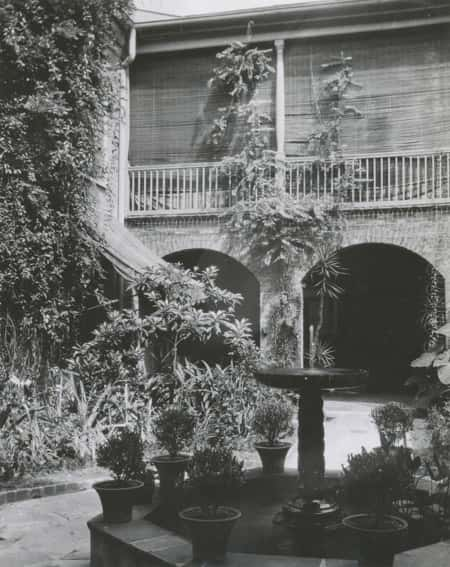
Le Petit Theatre is arguably the most haunted playhouse in the world. The theatre's original structure was built around the year of 1789, but was destroyed in New Orleans’ Second Great Fire in 1794. It was rebuilt a few years later in 1797 in the Spanish Colonial style that is still reflected in its beauty today. The building was later taken over by Union General, Benjamin Butler, and used as a barracks for the Army during the Civil War.
By the Great Depression, like much of the country, the building fell into ruin. But, in 1922, the building was bought by the Drawing Room Players, and was reborn. This resurgence of life, awoke many of the building's spirits. Reportedly, the ghosts of Union soldiers even began wandering the hallways and the property as a whole. Not all of the theatre's ghosts are seen; some have reported hearing the heavy sounds of Union boots on the hardwood floors and their muffled voices, perhaps discussing military strategy.
One of the Union soldiers apparently is a little vain. He has been seen looking at a blank wall as if a mirror was in front of him. He adjusts his clothing and turns side to side checking for the slightest imperfection. Once he his satisfied with his appearance, he'll smile and then vanish.
During one of the Drawing Room Player's shows at Le Petit, the ghost of a nun appeared (though her origin still remains unexplained), spooking the cast. She allegedly slapped one of the theatre's employees, leaving a vibrant red mark on their face.
There is a ghost that is even more feared than the slapping nun, and that is the hellish spirit of a former manager of the theatre. It is alleged that the ex-manager (for reasons not known) committed suicide in his office, by shooting himself in his head. Employees who have worked late in that very office have reported feeling the unnerving gaze of the former manager. Others have heard the sounds of banging drawers and slamming doors, and even their personal items have disappeared.
A story that has been told a few times happened at the office late one night, when a man noticed that his wallet was gone. He had placed it in his desk drawer, just a moment before, and there was no one else working that night. The next morning the man's wallet was found inside the theatre (which was locked up) resting on the sound board.
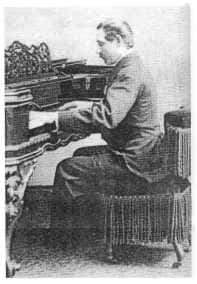
But, not all of the spirits at Le Petit are hostile. Those who have visited the theatre at night have been occasionally been treated to the musical talents of a ghostly pianist. Some have speculated that this is the work of composer Louis Moreau Gottschalk, who once graced the theatre when it was a dance hall with a transcending performance during the nineteenth century.
A regular at Le Petit is the ghost of an African-American, who is believed to have been a manservant. He can usually be spotted solemnly sitting in a chair, just outside of the door that leads to the theatre. In the early years of Le Petit (and other playhouses as well), it was not an uncommon sight to see servants outside the theatre's walls, forced to wait patiently for hours as their masters and mistresses enjoyed a show. The reason why the ghost of this servant continues to wait is unknown. Regardless of the reason, he ultimately serves as a reminder of the poor treatment that was once deemed acceptable in our society.
The story behind the ghost of the actress who haunts the catwalk above the theatre's stage is actually one of the more salacious tales at Le Petit. In the early years of the theatre, one of the actresses was having an affair with a maintenance worker. They had snuck up to the catwalk, where they engaged in romantic relations, but the actress apparently lost her balance and fell to her death. She was reportedly found unclothed with a broken neck. But, the maintenance worker (possibly a drifter) was nowhere to be found. He had fled the theatre and was never seen again. Considering the aftermath of the tragedy, there has been speculation on whether or not her death was actually an accident. Her spirit can still be seen on the catwalk, moving in the shadows.
Some have said that the actress's name was Caroline, and that she is rather helpful in finding missing items around the theatre (Perhaps stolen items by the former manager), while others insist that the actress who fell to her death and Caroline the helpful ghost are two different spirits.
A friend of Caroline is the former stage carpenter Sigmund. Unfortunately, Sigmund is not quite as helpful as sweet Caroline. Sigmund is often blamed for when things go wrong with the stage sets. Other mishaps in the theatre are reportedly caused by ghostly children, of course! After all, no haunted building is complete without at least a couple of little miscreant children spirits.
Managing parter Steve Pettus, spoke of a newer ghost back in 2013, before the reopening of Le Petit Theatre. During one of his visits to Le Petit, he arrived early, and as such he was the only one in the theatre. He walked around for a bit checking the grounds out as he waited. Abruptly, the lights began turning off and on, and then he heard the voice of a lady, calling out, “Katherine! Katherine!” He looked all around expecting to find someone, but he could not find a single soul.
Perhaps the most important ghost of Le Petit is the dapperly dressed gentleman known as Captain, whose presence is typically announced by the strong aroma of pipe tobacco and cologne. Captain is believed to be somewhat of a ghostly prophet. It is said that if he applauds after the premiere of a show, said show will go on to be a great success. The Captain's enthrallment with the theatre is rumored to stem from an actress that he had fallen deeply and madly in love with, and that he attends each premiere in hopes that he'll see her on stage at least once more. Sadly, his true love has yet to appear before him.
You can find Le Petit Theatre du Vieux Carre at 616 Saint Peter Street, and while the audience tends to be "higher class" people (whatever that actually means), the theatre is now open to all. The cast of most shows are volunteers, but every once in awhile a well-known actor will mix in with the regular cast.
The new management is also keen on mixing in modern elements into theatre, while trying to find the balance between Le Petit's past and its future. Artistic Director Maxwell Williams expresses just that by saying, "You can never lose sight of the past." He then adds (speaking of Le Petit's history and the theatre's many ghosts), "I haven’t personally met any of them. Though I will admit to when I’m alone sometimes talking to them. To let them know I’m there to do good stuff. That I'm here to help, you know."
With all these long-standing legends and ghostly tales at Le Petit Theatre, it's easy to see why this historic playhouse has garnered so much recognition as one of the most haunted theaters in the world. As, for Le Petit's future, it appears that the theatre will continue to capture the imagination of the community for many more years to come.
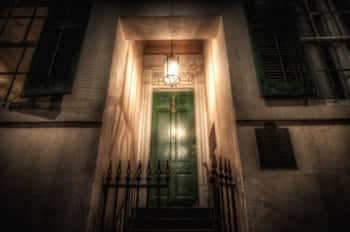
Was this the site of a grizzly mass murder?

New Orleans' most haunted Cemetery
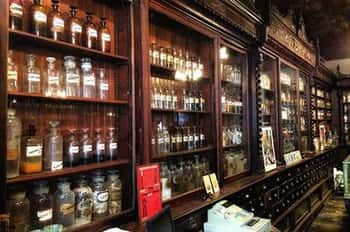
Who haunts this museum, and why?